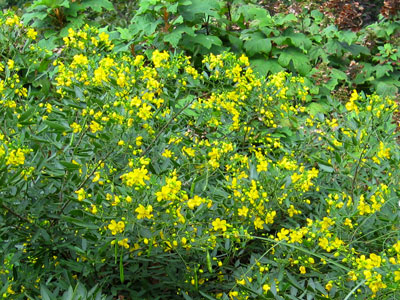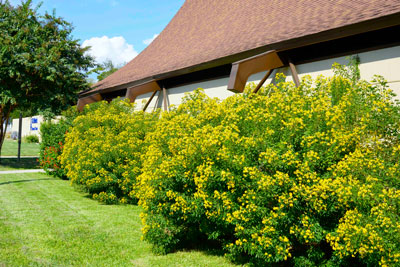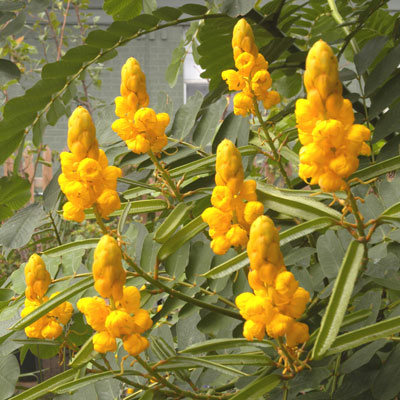Flowery Senna Needs Better Publicity

Photo: Bees and butterflies love it when the flowery senna pops open its flower buds.
I have loved this unusual shrub since I first saw it in the horticulture department nurseries at Texas A&M when I was a kid. I knew it would grow well in South Texas. However, I’ve been afraid to recommend flowery senna (Senna corymbosa – previously Cassia corymbosa) to North Texas gardeners. You see, I’ve planted it several times over those years, only to lose it to hard freezes within the first 36 months.

Photo: Flowery senna blooms each autumn in Texas.
The planting in my photos, however, is at St. Peters Episcopal Church in McKinney, and I was struck by their incredible bloom in mid-October last year. I didn’t get by to see them this fall, but when our own Methodist pastor asked me about them a few evenings ago, I knew I wanted to tell you about them here.
You might be lucky enough to find flowery senna at a local independent retail garden center, but you may have to grow your own. Flowery senna is typically started from seeds, but I would imagine that it could be rooted from cuttings. Start your transplants in late winter, so you’ll have 1-gallon shrubby transplants ready by springtime.
Plant these sennas in full or neary full sun into good and deep soil. They will benefit from organic matter mixed in at the time that you’re planting. Space the plants 5 or 6 feet apart, or if you’re planting only one into a perennial garden, set it at the back of the planting, and give it 4 feet in all directions.
Prune flowery senna only as needed to maintain its good shape. Keep it moist at all times, and apply an all-nitrogen fertilizer in early spring and again in early summer. Fall feedings encourage soft, succulent growth that could be hurt by the cold.
Worthy of note…
Our familiar fall-flowering candletree (Cassia alata) at one point was a sister to flowery senna. Now, however, the name-changing botanists have opted to give senna its own genus (Senna), so candletrees and flowery senna are just two pretty cousins.

Candletrees are tall (4 to 6 feet tall) flowering annuals that are best in the backs of our beds.
